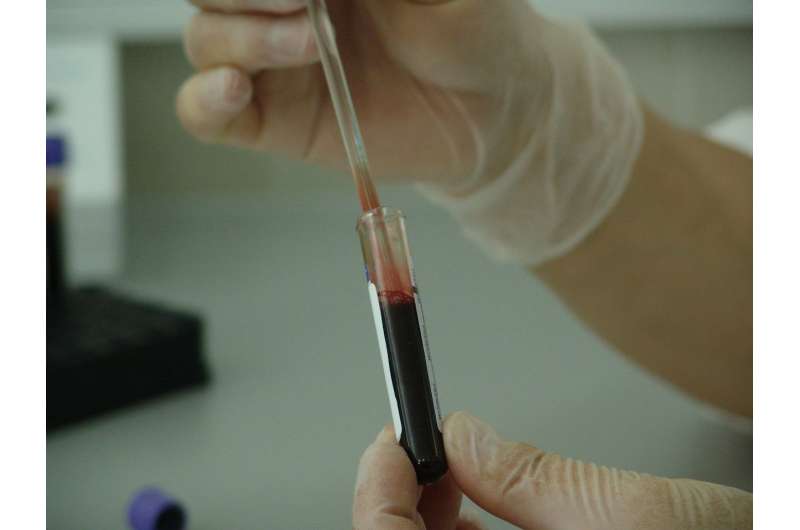Early Blood Tests in the First Trimester Enhance Prediction of Gestational Diabetes

A groundbreaking study from Singapore reveals that a simple first-trimester blood test measuring specific biomarkers can accurately predict the risk of gestational diabetes, enabling earlier interventions and improved maternal health outcomes.
Recent research conducted by the Global Center for Asian Women's Health (GloW) and the Department of Obstetrics and Gynecology at the Yong Loo Lin School of Medicine, National University of Singapore, has demonstrated that specific biomarkers from first-trimester blood samples can effectively predict the likelihood of gestational diabetes mellitus (GDM). This breakthrough offers a promising alternative to the traditional screening methods, which typically occur later in pregnancy.
In Singapore, GDM affects approximately one in five pregnant women and is usually diagnosed between 24 and 28 weeks through an oral glucose tolerance test (OGTT). This test involves fasting overnight and lasts up to three hours, making it inconvenient and sometimes challenging for expectant mothers. The new study, published in BMC Medicine, assessed nearly 100 biomarkers in both random (non-fasting) blood samples from the first trimester and fasting samples from the second trimester to identify early risk indicators.
The findings revealed that just seven biomarkers measured during the first trimester—such as HbA1c (a blood sugar indicator), certain hormonal and lipid-related proteins, and specific amino acids and fatty acids—could significantly improve GDM risk prediction. This performance was comparable to biomarkers from second-trimester fasting blood tests, which are considered more invasive and less convenient.
"Our research suggests that a simple, non-fasting blood test early in pregnancy could help identify women at risk for GDM before symptoms or complications develop," explained Dr. Yang Jiaxi, the study's lead author. "With further validation, we envision a future where clinics routinely use these early markers to initiate preventive measures, such as dietary and lifestyle modifications, much earlier in pregnancy."
The team categorized biomarkers based on clinical accessibility, ranging from routinely tested, low-cost options to specialized metabolomics analysis. Despite the highest predictive power seen when including all biomarker categories, models using only accessible markers still performed strongly, facilitating rapid clinical implementation.
This early detection method could allow for timely interventions to reduce adverse pregnancy outcomes, including high blood pressure, large babies, and premature delivery. Additionally, GDM is associated with increased risks of long-term conditions like type 2 diabetes and heart disease for both mothers and their children.
"Identifying at-risk women early enables targeted interventions that could improve maternal and neonatal health, and potentially disrupt the cycle of diabetes transmission," said Professor Cuilin Zhang, senior author of the study. As maternal obesity and age continue to rise in Asia, early, accessible screening for GDM becomes increasingly vital.
In conclusion, the new approach offers a practical, non-invasive, and effective way to predict GDM early in pregnancy, paving the way for better prevention and management strategies that can benefit long-term health outcomes for mothers and their children.
Stay Updated with Mia's Feed
Get the latest health & wellness insights delivered straight to your inbox.
Related Articles
Innovative 3D Imaging Reveals Earliest Stages of Heart Formation in Mammalian Embryos
A groundbreaking study using advanced 3D imaging uncovers the earliest cellular events in mammalian heart development, offering new insights into congenital heart defects and regenerative medicine.
New Security Measures Proposed to Protect Brain Implant Technology
Researchers from Yale propose vital security strategies to protect advanced brain-computer interfaces from cyber threats, ensuring patient safety and data privacy amid technological evolution.
Revolutionary Gut Bacteria Therapy Shows Potential for Kidney Stone Prevention
Innovative research at Stanford has developed genetically modified gut bacteria capable of reducing oxalate levels, showing promise in preventing kidney stones through animal and human trials.
New Insights into Rare Skin Disease Mechanisms Open Pathways for Targeted Treatments
Innovative research into the mechanisms of rare skin conditions like Sweet's syndrome reveals potential for targeted therapies that could revolutionize treatment options and reduce side effects. source: https://medicalxpress.com/news/2025-10-mechanisms-rare-skin-disease-treatments.html



